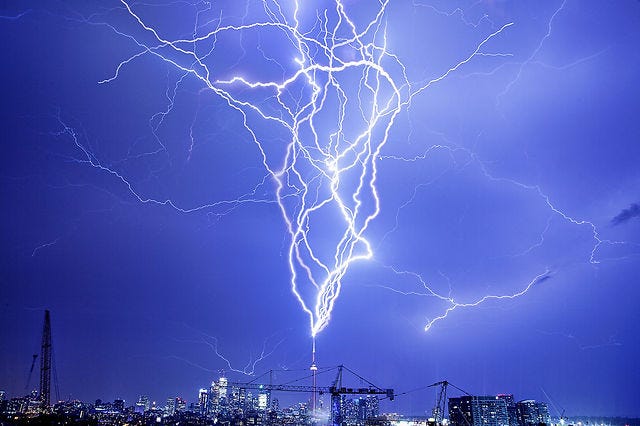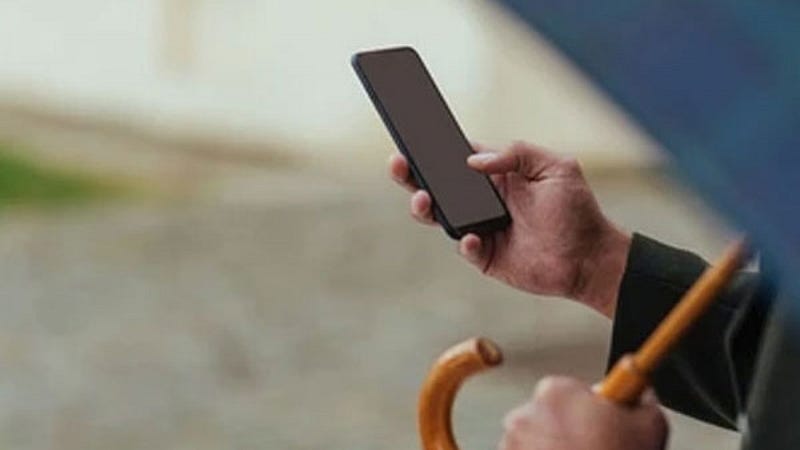Understanding the Effects of Lightning on Cellphones: A Guide
Written on
Chapter 1: Myths and Realities of Cellphone Use in Thunderstorms
When it comes to the safety of our mobile devices amid nature’s fury, particularly during lightning storms, many questions arise. Common myths suggest that cell phones attract lightning, but it's crucial to differentiate between myth and reality to understand the genuine risks associated with using mobile phones during such weather conditions. This article aims to dispel these misconceptions and shed light on how lightning can affect both mobile phones and their users, along with providing practical safety advice.
Let’s confront a prevalent myth: the idea that cell phones can draw lightning like a magnet. Thankfully, this belief is unfounded. Lightning doesn’t target electronic devices; instead, it is drawn to the tallest objects nearby, such as trees, structures, or even individuals who are outdoors. Therefore, your smartphone is not likely to be the target of a lightning strike, allowing you to feel reassured on that front.

However, despite your phone not being a lightning rod, there are legitimate reasons to be cautious and limit mobile phone use during thunderstorms:
Safety First: Your surroundings play a crucial role during a lightning storm. If you're outside, using your phone can increase your risk. It's wise to seek shelter in a solid structure, like a car or a building, to minimize exposure to lightning.
Stay Alert: Lightning can strike with alarming speed, leaving little time for a response. By concentrating on your phone, you might miss the signs of an impending storm. Stay aware of your environment and prioritize your safety.
Corded Connection Risks: While mobile devices are relatively safe, corded phones are a different story. Lightning can travel through phone lines, posing a significant threat to those using wired connections during storms. Opt for wireless options to mitigate electrical hazards.

Practical Safety Tips: With myths clarified and risks outlined, here are actionable tips to enhance your safety during lightning storms:
Heed the Warning Signs: The moment you hear thunder, it’s time to take cover. Don’t wait for nearby lightning strikes to seek shelter. Respect nature’s power and prioritize safety by heading indoors at the first sign of a storm.
Limit Mobile Phone Use: Even though your smartphone doesn’t attract lightning, it’s prudent to minimize any unnecessary risks during thunderstorms. Set aside your phone and focus on finding shelter until the storm has passed.
Educate Others: Share this information with friends and family to promote awareness about the significance of safety during lightning storms. By spreading knowledge and debunking myths, you can help protect others from potential dangers.
GAME CHANGER MOMENT
In a world rife with misinformation, distinguishing fact from fiction is essential, particularly regarding safety. While cell phones do not attract lightning, their use during thunderstorms can create unnecessary risks. By understanding the real threats and taking proactive measures to ensure safety, you can enjoy the benefits of technology without jeopardizing your well-being during lightning storms.
Stay informed and empowered by subscribing to our newsletter for more insights on technology, safety, and lifestyle tips. Join our community and prioritize your well-being in an ever-evolving world.
Chapter 2: The Impact of Lightning on Cellphones
This video from National Geographic UK showcases a mobile phone being struck by lightning, providing insight into the effects of such an event on technology.
In this informative video, the discussion centers around whether lightning poses a danger to cell phones, helping viewers understand the risks and safety measures.